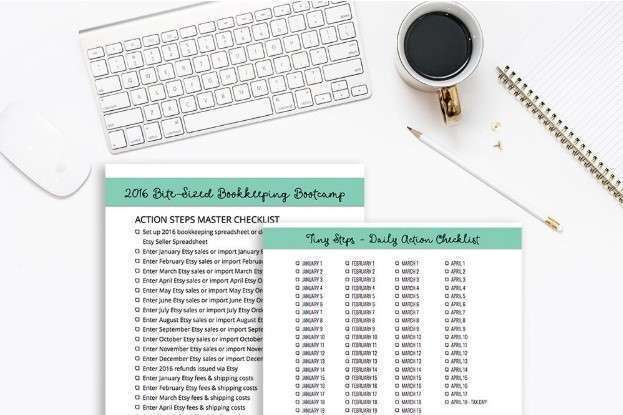Content

Invoice approval – The invoice approval process begins when the buying organization receives the supplier invoice. An authorized approver signifies whether or not the supplier invoice is valid and accurate before payment is processed. Safeguard petty cash fund through the use of lockable cash boxes and secure the boxes in a locked cabinets drawer or safe when not in use by the custodian. Require that petty cash vouchers be approved by the requesting employee’s supervisor or another appropriate individual familiar with activity that resulted in the original expenditure. If that individual is not available for an extended period, contact the Office of the Treasurer to transition responsibility to someone else.

This prevents errors like an inaccurate input of the 9-digit account number or inputting negative amounts for payments which will need to be fixed later on. It’s important to have processes in place that ensure your organization is prepared for a worst-case scenario such as internal or occupational fraud attempts, or fraudulent vendor invoices. Internal controls are required to help ensure the safety and security of your organization’s payments and mitigate fraud. Morgan’s 2021 AFP Payments Fraud and Control Survey, 82% of organizations were subject to attempted or successful fraud in 2019. Record keeping requirements exist throughout the cash collections process.
Limitations Of An Entity’s Internal Control
Internal controls as related to fraud are the measures, policies, and procedures a company puts in place to safeguard assets and ensure the reliability of accounting data. With Pathlock, customers can monitor compliance continuously, highlighting any potential risks early on, so they can be remediated in time for an audit. Additionally, they can enforce compliance with preventive controls that keep behavior in line with what is required. When audit season rolls around, a report can automatically be generated by Pathlock which outlines all of the controls, the compliance with those requirements, and any potential violations which have been remediated. Undesirable trends in metrics like revenue, profitability, or customer attrition, may be related to a failure of internal controls.
- For example, computer-assisted audit techniques may be used to test automated controls or data related to assertions.
- In some information systems, IT may be used to automatically transfer such information from transaction processing systems to general ledger or financial reporting systems.
- This could be in the form of a cash register tape, a revenue log, a pre-numbered receipts book, etc.
- Finally, the auditor will perform more substantive procedures to assess the level of overall risk according to the audit strategy.
- Consideration of evidential matter about these changes, together with the considerations in the preceding paragraph, may support either increasing or decreasing the evidential matter about the effectiveness of design and operation to be obtained in the current period.
They are standardized operating procedures used by companies in their accounts payable process to mitigate the risk of human error, prevent fraud, reduce improper payments, and ensure regulatory compliance. Many AP departments could improve their overall efficiency by evaluating existing accounts payable procedures and identifying areas for improvement. Let’s dive into the three types of internal controls your AP department should be using and explore some best practices. The auditor uses the understanding of internal control and the assessed level of control risk in determining the nature, timing, and extent of substantive tests for financial statement assertions.
Internal Controls
In many entities, much of the information used in monitoring may be produced by the entity’s information system. If management assumes that data used for monitoring are accurate without having a basis for that assumption, errors may exist in the information, potentially leading management to incorrect conclusions from its monitoring activities.
- Auditing Standard No. 12, Identifying and Assessing Risks of Material Misstatement, regarding identifying risks that may result in material misstatement due to fraud.
- This involves making judgments regarding both precision and sufficiency of controls required to mitigate the risks.
- This process is accomplished through ongoing activities, separate evaluations, or a combination of the two.
- An entity’s use of IT may affect any of the five components of internal control relevant to the achievement of the entity’s financial reporting, operations, or compliance objectives, and its operating units or business functions.
- Good controls encourage efficiency, compliance with laws, regulations and university policies, and seek to eliminate fraud and abuse.
- This provides individuals with the opportunity to alter an already approved timecard and receive inappropriate additional pay.
Liquid assetsalways need to be protected more than illiquid assets because they are more easily stolen. Take cash for example.Cashis the most liquid asset and can be pretty easily stolen by any employee who handles it. IT application controls – Controls over information processing enforced by IT applications, such as edit checks to validate data entry, accounting for transactions in numerical sequences, and comparing file totals with control accounts. Requiring specific managers to authorize certain types of transactions can add a layer of responsibility to accounting records by proving that transactions have been seen, analyzed and approved by appropriate authorities.
Cash
The auditor should obtain evidence to determine whether changes to the automated control have been made that would affect its continued effective functioning. Consideration of evidential matter about these changes, together with the considerations in the preceding paragraph, may support either increasing or decreasing the evidential matter about the effectiveness of design and operation to be obtained in the current period. An entity’s risk assessment differs from the auditor’s consideration of audit risk in a financial statement audit. The purpose of an entity’s risk assessment is to identify, analyze, and manage risks that affect entity objectives. In a financial statement audit, the auditor assesses inherent and control risks to evaluate the likelihood that material misstatements could occur in the financial statements. The auditor’s understanding of internal control may sometimes raise doubts about the auditability of an entity’s financial statements.
Walmart’s CFO to leave the company after 22 years – CFO Dive
Walmart’s CFO to leave the company after 22 years.
Posted: Mon, 29 Nov 2021 21:37:04 GMT [source]
Implementingsegregation of dutieswhere duties are divided among different people, to reduce the risk of error or inappropriate actions. No one person has control over all aspects of any financial transaction. Occasional accounting reconciliations can ensure that balances in your accounting system match up with balances in accounts held by other entities, including banks, suppliers and credit customers. For example, a bank reconciliation involves comparing cash balances and records of deposits and receipts between your accounting system and bank statements. Differences between these types of complementary accounts can reveal errors or discrepancies in your own accounts, or the errors may originate with the other entities. Promote efficient and effective operations – Internal controls provide an environment in which managers and staff can maximize the efficiency and effectiveness of their operations.
Components Of Internal Control
Internal controls are techniques, processes and rules that enhance accountability that financial integrity and also prevent fraud. These controls enable a company provides timely and accurate financial information while complying with the laws of the state. The auditor should consider the combined effect of various types of evidential matter relating to the same assertion in evaluating the degree of assurance that evidential matter provides. In some circumstances, a single type of evidential matter may not be sufficient to evaluate the effective design or operation of a control. To obtain sufficient evidential matter in such circumstances, the auditor may perform other tests of controls pertaining to that control. For example, an auditor may observe the procedures for opening the mail and processing cash receipts to evaluate the operating effectiveness of controls over cash receipts.
LIONHEART ACQUISITION CORP. II : Non-Reliance on Previous Financials, Audits or Interim Review (form 8-K) – marketscreener.com
LIONHEART ACQUISITION CORP. II : Non-Reliance on Previous Financials, Audits or Interim Review (form 8-K).
Posted: Tue, 30 Nov 2021 22:25:13 GMT [source]
Require receipts for all petty cash disbursements with the date, amount received, purpose or use for the funds, and name of the employee receiving the funds listed on the receipt. Maintain an equipment list and periodically complete an equipment inventory. Participate in the hiring/approval to hire consultants including the independent auditors. Evaluate the Executive Director’s performance annually against a written job description. what are internal controls in accounting Periodically review the check register or general ledger to determine whether payroll taxes are paid promptly. Examine canceled checks to make sure vendors are recognized, expenditures are related to agency business, signatures are by authorized signers, and endorsements are appropriate. If the agency is so small that you can’t separate duties, require an independent check of work being done, for example, by a board member.
Conduct A Risk Assessment
Our audits also included performing such other procedures as we considered necessary in the circumstances. We believe that our audits provide a reasonable basis for our opinions. In all audits, the auditor should obtain an understanding of internal control sufficient to plan the audit by performing procedures to understand the design of controls relevant to an audit of financial statements and determining whether they have been placed in operation. In obtaining this understanding, the auditor considers how an entity’s use of information technology fn 2 and manual procedures may affect controls relevant to the audit. The auditor then assesses control risk for the relevant assertions embodied in the account balance, transaction class, and disclosure components of the financial statements. Regardless of the assessed level of control risk, the auditor should perform substantive procedures for all relevant assertions related to all significant accounts and disclosures in the financial statements. The auditor’s understanding about internal control should be used to identify the types of potential misstatements that could occur and to consider factors that affect the risk of material misstatement.

Segregation of Duties – The objective is to ensure that duties are assigned to individuals in a manner that ensures that no one individual can control both the recording function and the procedures relative to processing the transaction. Error handling – The objective is to ensure that errors detected at any stage of processing receive prompt corrective action and are reported to the appropriate level of management. Physical Safeguards & Security – The objective is to ensure that access to physical assets and information systems are controlled and properly restricted to authorized personnel. Completeness – The objective is to ensure that no valid transactions have been omitted from the accounting records. Incident response is an example of a time-sensitive operational control. Timely intervention is the most effective to prevent or mitigate a breach. The longer the interval between the onset of a security event and the intervention, the less effective the incident response.
For example, the auditor might obtain and control a copy of the program and use computer-assisted audit techniques to compare that copy with the program that the entity uses to process data. Inquiry alone generally will not provide sufficient evidential matter to support a conclusion about the effectiveness of design or operation of a specific control. For other controls, however, such documentation may not be available or relevant. In such circumstances, evidential matter about the effectiveness of design or operation may be obtained through such methods as observation, inquiry, or the use of computer-assisted audit techniques. The conclusion reached as a result of assessing control risk is referred to as the assessed level of control risk. In determining the evidential matter necessary to support an assessed level of control risk below the maximum level, the auditor should consider the characteristics of evidential matter about control risk discussed in paragraphs .90 through .104.
So what this means they don’t audit any of their internal controls which is WHATS IN QUESTION! How hard is that to understand?? They are Fraud and they know they don’t have to file a 20-F until maybe 2021. U think u know Accounting. Let’s go I’m ready!
— Wall Street Prof. (@fsusmatty) June 11, 2020
The auditor determines whether controls have been placed in operation as part of the understanding of internal control necessary to plan the audit. The auditor evaluates the operating effectiveness of controls as part of assessing control risk, as discussed in paragraphs .62 through .83 of this section.
For small businesses with only a few accounting employees, sharing responsibilities between two or more people or requiring critical tasks to be reviewed by co-workers can serve the same purpose. You can increase the safety of your assets by having a third party review your company’s accounts. Any employees who are involved with internal accounting and aware of your third-party review will be deterred from fraudulent practices. An independent reviewer will also be able to identify errors and inconsistencies.
What internal controls are common in the accounting cycle?
Internal control is important in accounting cycle as without it the entire system would be manipulated. The internal control in accounting system would include all documents numbered sequentially, security to access system, transaction limit, debit should be equal to credit, audit of system.
There will be an escalation process which includes three email reminders and will ultimately result in the loss of BFS access for all employees within your division. To avoid unnecessary interruptions to your business process, please make sure to complete your reviews by the due date. Control activities are the policies and procedures that help ensure management directives are carried out. They help ensure that necessary actions are taken to address risks to achievement of the entity’s objectives. Internal controls help to prevent misstatement of financial statements. A second purpose for internal controls is to ensure that financial information is accurate, reliable and timely.
- These probing questions, combined with the other walkthrough procedures, allow the auditor to gain a sufficient understanding of the process and to be able to identify important points at which a necessary control is missing or not designed effectively.
- In addition, information may come to the auditor’s attention as a result of performing substantive tests or from other sources during the audit that differs significantly from the information on which his or her planned tests of controls for assessing control risk were based.
- Internal control plays an important role in the prevention and detection of fraud.
- A lack of standardization can cause items to be overlooked or misinterpreted in such a review.
- Form Over Substance – Controls can appear to be well designed but still lack substance, as is often the case with required approvals.
- A third and very important purpose of internal controls is to ensure compliance with federal, state and local business laws.
Initial and date the bank statements or reconciliation report to document that a review and reconciliation was performed and file the bank statements and reconciliations. Use a system of checks and balances to ensure no one person has control over all parts of a financial transaction. Require purchases, payroll, and disbursements to be authorized by a designated person. Fn 1 Internal control also may be referred to as internal control structure. Change the timing of substantive tests, such as performing them at year end rather than at an interim date. Paragraph 61 and paragraph 5 of Auditing Standard No. 13, The Auditor’s Responses to the Risks of Material Misstatement, for further discussion about predictability of auditing procedures). A statement that a material weakness has been identified and an identification of the material weakness described in management’s assessment.
Develop a culture of internal accounting controls; talk about what they are, even in a remote setting. Mary Cleary and @bethanyg talking about doing accounting remotely. #NPFinance20
— PropelNP (@PropelNP) April 21, 2020
Author: Gene Marks


